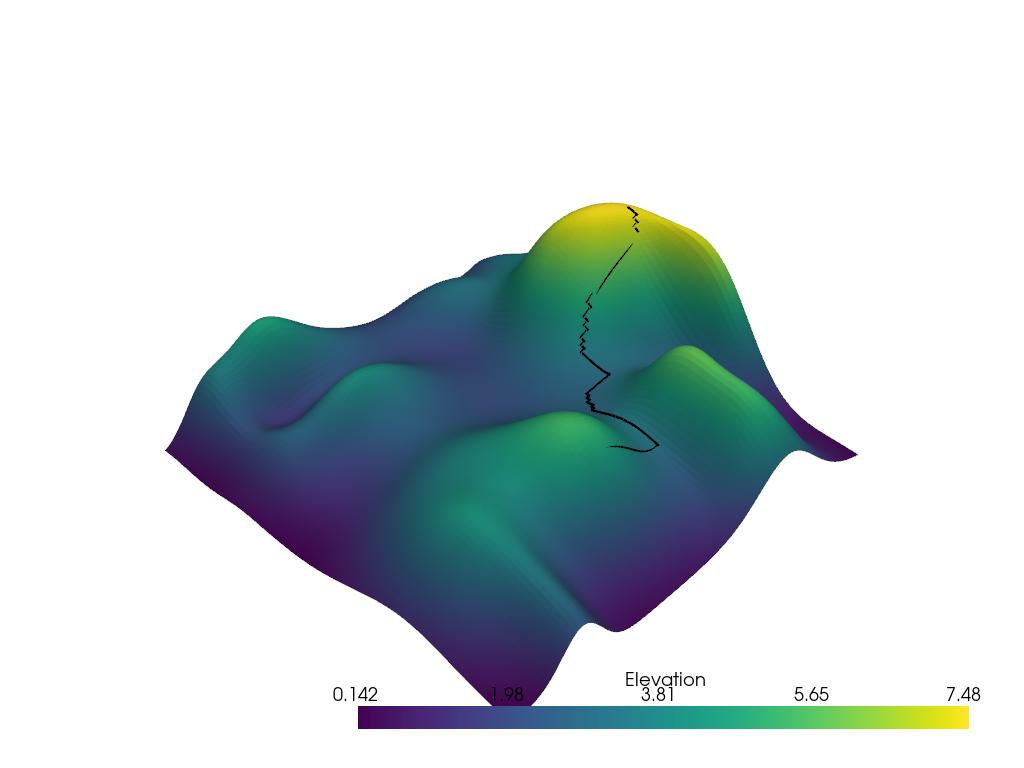pyvista.PolyDataFilters.geodesic#
- PolyDataFilters.geodesic(start_vertex, end_vertex, inplace=False, keep_order=True, use_scalar_weights=False, progress_bar=False)[source]#
Calculate the geodesic path between two vertices using Dijkstra’s algorithm.
This will add an array titled
'vtkOriginalPointIds'of the input mesh’s point ids to the output mesh. The default behavior of the underlyingvtkDijkstraGraphGeodesicPathfilter is that the geodesic path is reversed in the resulting mesh. This is overridden in PyVista by default.- Parameters:
- start_vertex
int Vertex index indicating the start point of the geodesic segment.
- end_vertex
int Vertex index indicating the end point of the geodesic segment.
- inplacebool, default:
False Whether the input mesh should be replaced with the path. The geodesic path is always returned.
- keep_orderbool, default:
True If
True, the points of the returned path are guaranteed to start with the start vertex (as opposed to the end vertex).New in version 0.32.0.
- use_scalar_weightsbool, default:
False If
True, use scalar values in the edge weight. This only works for point data.- progress_barbool, default:
False Display a progress bar to indicate progress.
- start_vertex
- Returns:
pyvista.PolyDataPolyDataobject consisting of the line segment between the two given vertices. IfinplaceisTruethis is the same object as the input mesh.
Examples
Plot the path between two points on the random hills mesh.
>>> import pyvista as pv >>> from pyvista import examples >>> hills = examples.load_random_hills() >>> path = hills.geodesic(560, 5820) >>> pl = pv.Plotter() >>> _ = pl.add_mesh(hills) >>> _ = pl.add_mesh(path, line_width=5, color='k') >>> pl.show()

See Geodesic Paths for more examples using this filter.